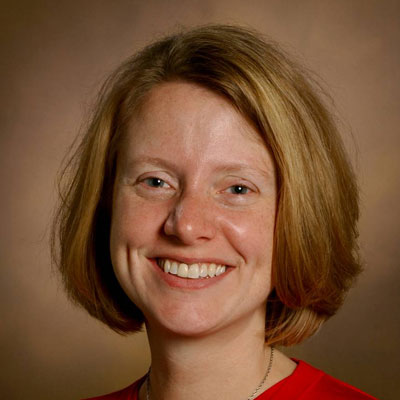The number of U.S. medical students has steadily increased over the past decade. Education experts have called for reforms to accommodate the growth – and to increase engagement and prevent burnout among trainees.
Jodi Dingle, M.D., and Amy Fleming, M.D., recently sat down to describe how they’ve implemented innovative strategies at Vanderbilt University School of Medicine that go beyond traditional lectures. Dingle is a pediatric rheumatology fellow and Fleming is an associate dean for medical student affairs at Vanderbilt.
Discoveries: You’ve both done research into effective medical education. What are the major gaps? How can they be overcome?
Fleming: Most people who come into medicine are successful because they’ve learned how to find the ‘right’ answer. But so many times in medicine, there isn’t a ‘right’ answer. When you give a lecture to a group of students, they’re trying to figure out what is going to be on the test and how to remember the correct answer. Instead, when you create a situation where they are actively involved in having a conversation, it helps students understand that there may be more than one ‘right’ answer.
Dingle: An active learning approach also helps with information retention. It takes students beyond memorizing to make sure they can apply information in the future.
Discoveries: What are some examples of active learning approaches?
Fleming: There are a lot of ways people are already doing this. There’s the flipped classroom, where you ask students to do reading or watch a lecture before class, and they then apply the knowledge in the classroom. There are learning communities that encourage team-based learning and longitudinal relationships between faculty and students. We decided to try a debate based on a clinical case, where we ask students to prepare and come to class ready for a discussion.
Discoveries: You recently used debate to teach medical students about pediatric rheumatology. Why was rheumatology a good fit for a pilot test?
Dingle: One of our focuses as rheumatologists is early exposure. There’s already a shortage of rheumatologists – particularly pediatric rheumatologists – and this shortage is expected to grow. We wanted to get medical students involved in a novel way that would pique their interest. Rheumatology is also a specialty that covers complex diseases that involve many organ systems. It requires unique skills that emphasize communication, tolerating ambiguity, and identifying ways to manage diseases that don’t always have clear, evidence-based treatment guidelines.
Fleming: Debate isn’t the way to teach everything – if there’s a definite answer, it’s not the way to go – but it can be particularly effective for teaching subjects with ambiguity.
“We wanted to get medical students involved in a novel way that would pique their interest.”
Discoveries: How did you incorporate debate, and what was the result?
Dingle: We developed a study where we divided students into two groups to learn about Henoch-Schönlein Purpura. One group received a traditional lecture, and a second group received case study materials a week ahead of time followed by a debate during class time.
Fleming: We wanted to know if, by using debate as an active learning method, students would learn the basic subject material of the topic, in addition to gaining other clinical reasoning skills.
Dingle: Exactly. In the debate group, we asked half the students to argue in favor of steroid treatment and half against steroid treatment. Through pre- and post-tests, we confirmed all the students learned the material. But in a follow-up survey three months later, over 87 percent of students in the debate group said they applied the literature research skills they used in the sessions to the direct care of a patient, compared to only half the students in the lecture group.
Discoveries: Why do you think that is?
Dingle: After we held the debates, we debriefed. I asked how the debate went, and how the preparation went. Students expressed how they had expected the answer to be clear, and for it to be easy, but when they went to the literature they found there was evidence to support both sides. Going through the process helped them appreciate how to weigh different kinds of evidence to make a clinical decision. Students also expressed that explaining their findings to peers was a beneficial practice for later explaining concepts to patients and families.
Fleming: A key element of this study was that students employed physician traits that can be more difficult to teach and measure than knowledge. As doctors, we have to be able to professionally disagree and have evidence-based discussion without jousting. Debates allow students to build and practice skills that have traditionally just been modeled.
Discoveries: How did you decide on this approach?
Fleming: The first time I used debate for teaching was in place of a journal club. I didn’t want the students to just sit in a classroom and listen to presentations. Instead, I set up a debate, and the students were extremely engaged. One student came up to me afterward and said it was much harder – they had put in much more effort and were much more engaged in the process then they normally would be for a journal club. Instead of simply finding an answer, they read all the information for every viewpoint, to avoid being ‘caught off-guard’ during the debate. The competition aspect really resonated.
Dingle: This project was also an extension of work by Amy and our colleague T. Brent Graham, M.D., director of pediatric rheumatology at Vanderbilt – he’s who connected the two of us.
“Debates allow students to build and practice skills that have traditionally just been modeled.”
Discoveries: Are you considering other opportunities to apply these approaches?
Dingle: I’m interested in implementing debate-style sessions at the department level. There are so many diagnostic approaches and treatments that don’t have clear evidence in the literature. I’d like to create debate teams that cross the educational spectrum, with an attending, a nurse practitioner, a resident, a medical student and others involved in our clinic.
Fleming: For continuing education, a lot of people are looking for ways to learn that reflect what they’re actually doing in their job. Debate-style sessions could have huge benefits. There’s so much more to learn about how to work inter-professionally and valuing the contributions of everyone on a team. Plus, it’s fun. Constantly learning in the same way can foster boredom or disinterest. There’s a benefit to simply changing it up.







